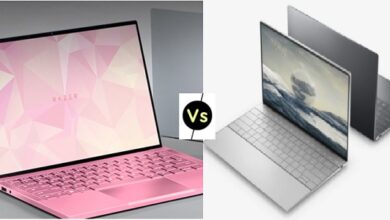
While 2021 was a year that could best be described as stressful, it did turn out to be a watershed moment for audiovisual aficionados. For one thing, Cheaper OLED TVs finally got some actual hardware innovation to go along with the customary software updates, while the debut of next-gen Mini-LED panels from the top companies revolutionized the premium LCD TV sector.
However, in the tech industry, big years are frequently followed by abnormally quiet ones. So, in 2022, can we really anticipate anything truly spectacular to happen to our televisions? Actually, it appears that we will be able to do so, with high-end technologies becoming even more affordable, enhanced audio, more gaming capabilities, and a brand new technology called QD-OLED.
Here are the TV trends to predict in 2022 – as well as won’t have to wait long to see some of them, as most TV manufacturers are supposed to make huge statements during CES 2022, which will take place in the first week of January!
QD-OLED
The acronym QD stands for Quantum Dots, and it denotes a union of convenience and, presumably, image quality advantages between the QLED and OLED worlds. In theory, QD-OLED TVs will combine the great brightness as well as color volumes of Quantum Dot TVs with the dark levels as well as pixel-level local contrast heroics of OLED screens.
However, there are rumors circulating in South Korea that Samsung is planning to release some straight OLED TVs as well. If this is the case, Samsung has effectively buried the OLED hatchet.
Samsung isn’t the only TV manufacturer said to be releasing QD-OLED televisions in 2022. Sony is rumored to be following suit. Sony’s QD-OLED panels could potentially be available sooner than Samsung’s.
It’s worth noting that rumors of QD-OLED displays approaching the market have been around for a few years, with nothing coming true. This time, though, there appear to be some legitimate reasons to be optimistic.
Masses Have Access To Oled And Mini-Led
According to early reports, the OLED advancements made in 2021 will be further consolidated. As a result, we may see higher-brightness OLED panels in more affordable OLED TV ranges as well as brands than we did in 2021, whereas standard-brightness OLED panels may fall even more in price.
The user probably starts seeing Mini-LED sneaking into cheaper models farther down Samsung, LG, TCL, and Hisense’s TV lines, as well as the technology being embraced by other makers. Sony, in particular, may find it difficult to ignore Mini-LED once more for its mid-range LCD TVs in 2022, unless it fully commits to QD-OLED as its ‘next gen’ option, which will not be inexpensive.

In 2022, premium Mini-LED models may strive to drive even more independent dimming zones than they did in 2021, improving HDR performance even more – though it’s more probable that we’ll see advancements in the processing used to control Mini-LED lighting arrays, as well as a general price decrease.
What Happened To Micro-led?
All of this focus on Mini-LED, QD-OLED, and improved standard OLED panel technologies appears to be at the expense of MicroLED, which has long been touted as the next big thing in television.
Thankfully, it hasn’t completely vanished off the consumer radar, but don’t expect to see it in many households. In 2022, Samsung appears to be almost certain to have two or three MicroLED versions “ready to order.” The issue is that technology is still only a viable choice for the very rich.
Samsung is the only company still seriously pushing Micro LED as a ‘living room’ option (other companies make it for commercial screens), but it simply hasn’t been able to solve the problems of producing MicroLED screens at any sort of affordable price point or in anything approaching mainstream screen resolution. So, if you were expecting that 2022 would be the year of MicroLED, it might be time to switch horses.
Many interpret Samsung’s shift to OLED-based technology as a veiled acknowledgment that MicroLED will be years away from being popular.
Bigger Will Continue To Be Better
Over the last 18 months, the Preference for staying at home for entertainment has accelerated the long-term trend toward larger screen sizes.
75-inch displays will become the new 65-inch displays for many AV lovers in 2022, according to trends, specifically as more and more firms begin to make 75-inch screens seriously reasonable compared to where they were only a few years ago.
There are also indicators that the previously significant cost cliff associated with going up to 85 inches or more may be dissolving. It’s worth noting, though, that screens this large may be harsh in exposing picture quality flaws, so choosing the cheapest choice might not be the greatest decision.
The probable expansion of the ultra-short throws projector business as an alternative to big-screen TVs is another wrinkle worth discussing in this section. Hisense is capitalizing on this trend by marketing new all-in-one ‘laser TVs,’ which combine a laser-based extremely short-throw projector with a stiff, high reflectivity display.
However, standalone super short-throw projectors are becoming increasingly affordable and accessible and will be the ideal projector choice for many.
Will 2022 Finally See 8k Tvs Come Of Age?
No, although there is a longer response that goes something like “Well, maybe.” ‘A little.’
The simple answer is that 2022 doesn’t appear to be bringing us much in the way of native 8K sources, which many customers want to see before making the 8K leap. On a technical level, there has been some progress in this area, with the 8K-friendly AV1 compression method now in use.
In reality, YouTube is already using it to handle 8K videos, and Netflix has begun to use AV1 compression on compatible devices, which is maybe more intriguing from the standpoint of mainstream entertainment.
Due to the influence, 8K pixel counts can have on image quality with relatively large displays, 2022 could be the year of 8K. If you’re one of the users who’s jumping on the above trend as well as going big-display, a high-quality 8K TV can make 4K images look more informative, dense, as well as free of the pixel structure, given the TV’s processing for transforming 4K to 8K is up to the job.
Improving Their Performance
Gaming capabilities have quickly become almost as crucial as image and sound quality when it comes to TV purchases. So it’ll be good to see TVs finally starting to get their gaming houses in order, much more regularly than they did in a frantic 2021.
More HDMI 2.1 ports, as well as CPUs able to handle the 4K 120Hz, variable frame rate, and automatic low latency mode switching features already available from the latest consoles as well as PCs, should be at the center of this.
Issues with HDMI 2.1 chip supply could be the final stumbling block. This has been going on for a while, as well as the pandemic isn’t helping. But, perhaps, in 2022, these pressures will have a smaller influence than they did last year.
Sound Becomes More Serious
Samsung will continue to improve its Object Tracking Sound technology, which places speakers all around the frame of a TV to create a wider sound stage. With any optimism, Samsung will partner OTS with built-in Dolby Atmos decoding for the first time in 2022 — it seems like a perfect fit, but Samsung has yet to embrace Atmos. So far, so good.
- 10 Best Accessories For Your New Nintendo Switch OLED Edition
- Next Generation OLED EX Technology: Improvements Report
- LG C1 OLED and Samsung Odyssey Neo G9: Review
More TVs will feature Dolby Atmos sound, which will lead to more multi-speaker setups like the ones described above, as well as more built-in sound bars’ (or speaker enclosures, based on who you ask) incorporated directly into TV stands from companies such as Philips, Panasonic, and Hisense.
Delightful Design
The quality of design TVs for 2022 will surely be enhanced by the return of luxury company Loewe to the TV competition – its colorful and inexpensive new TVs are highly alluring.
It should be noted that there is currently no proof that Sony or Panasonic are exploring distinct lifestyle design series for their 2022 product lines. You should probably never say never when there are so many head-turning competitors out there.

Conclusion
If you’re seeking to upgrade this year or just want something to watch the Super Bowl on. Selecting the ideal model for your home & budget, however, isn’t always straightforward. It’s difficult to find a TV that ticks all the appropriate boxes, especially with characteristics like 8K resolution, OLED as well as QLED panels, mini-LED, HDR, smart home connectivity, voice control, and more.
People May Ask
Is QD OLED Susceptible To Burn-In?
While these enhancements will benefit QD-OLED displays by potentially increasing brightness, widening the color spectrum, and making colors more lifelike, the panels will still be vulnerable to burn-in.
Is Microled Superior To OLED?
MicroLED, which uses millions of tiny individually addressable LEDs, claims to match the image quality of the existing champion, OLED, but with superior brightness and a decreased risk of burn-in.






